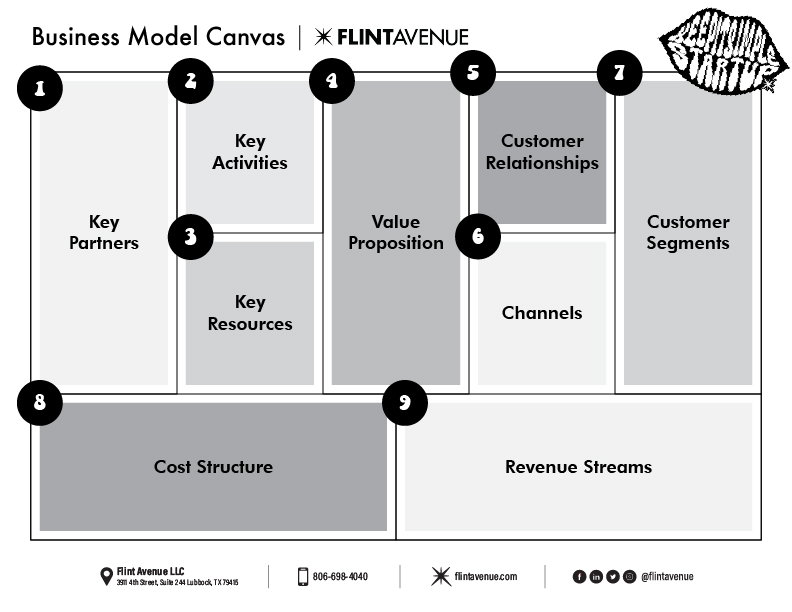
KISS Business Model Canvas: Simplifying Your Business Strategy
Welcome to the concluding installment of our KISS (Keep It Simple, Startup) series. In this final post, we’re breaking down the Business Model Canvas (BMC) into digestible, actionable parts, applying the principle of simplicity to streamline your business strategy. The BMC is an invaluable tool for entrepreneurs, providing a clear, concise framework for understanding the various facets of your business. Let’s simplify each section, ensuring that you can apply these insights directly to your startup journey.
Introduction to the Business Model Canvas
The Business Model Canvas is a strategic management template used for developing new business models and documenting existing ones. It offers a visual chart with elements describing a firm’s value proposition, infrastructure, customers, and finances. By breaking down these components, businesses can align their activities by illustrating potential trade-offs. Applying the KISS method, we’ll explore how simplifying each segment of the canvas can clarify your business model and streamline planning and operations.
Simplifying Each Section of the Business Model Canvas
1. Key Partnerships
What to Include: List your main partners and suppliers. These are the external companies or individuals who contribute to your business’s success.
Importance: Identifying these helps you understand your dependencies and leverage partnerships for growth.
Example: Suppliers, manufacturers, business partners, and affiliate organizations.
2. Key Activities
What to Include: Describe the most important activities needed to make your business model work. These are your critical tasks and operations.
Importance: This clarifies where to focus your time and resources for maximum impact.
Example: Product development, marketing campaigns, customer service.
3. Key Resources
What to Include: List the resources essential for your business to operate. These can be physical, financial, intellectual, or human.
Importance: Understanding your resources helps you manage them more effectively and pinpoint areas needing investment.
Example: Capital, employees, brand, customer databases.
4. Value Propositions
What to Include: Clearly articulate the value your company provides to customers. This is the reason customers choose you over competitors.
Importance: A strong, clear value proposition guides all other aspects of your business model.
Example: Unique features, cost savings, customer service excellence.
5. Customer Relationships
What to Include: Define the type of relationships you establish with different customer segments.
Importance: Understanding these relationships helps you maintain customer satisfaction and loyalty.
Example: Personal assistance, self-service, automated services.
6. Channels
What to Include: Detail how your company communicates with and reaches its customer segments to deliver the value proposition.
Importance: Effective channels improve customer experience and increase revenue.
Example: Website, social media, retail locations, sales team.
7. Customer Segments
What to Include: Identify the different groups of people or organizations your business aims to reach and serve.
Importance: Knowing your customer segments allows you to tailor your value propositions and marketing strategies.
Example: Market segments, demographics, customer needs.
8. Cost Structure
What to Include: Outline the main costs involved in operating your business.
Importance: Understanding your costs helps you manage your budget and set appropriate pricing.
Example: Fixed costs (rent, salaries), variable costs (materials, commissions).
9. Revenue Streams
What to Include: Specify how your business makes money from each customer segment.
Importance: Clear revenue streams ensure your business model is financially viable.Example: Sales, subscriptions, leasing, advertising.
Implementing Your Simplified Business Model
Once you’ve simplified each section of the Business Model Canvas, the next step is to integrate these insights into your business strategy. This simplified approach should make it easier to identify your core business elements, align your activities, and ensure that every part of your business is working towards the same goals. New opportunities for your business can also be explored using the Business Model Canvas as a template.
Final Thoughts
The journey of entrepreneurship is filled with complexities, but your business model doesn’t have to be one of them. By applying the KISS method to your Business Model Canvas, you can create a clear, focused, and efficient roadmap for your startup’s success.
As we wrap up our KISS series, remember that simplicity is not about taking shortcuts or overlooking details; it’s about focusing on what truly matters for your business. Keep your approach straightforward, your goals clear, and your actions deliberate. Here’s to simplifying your path to success!
Ready to Take Your Startup to the Next Level?
We understand that the journey of entrepreneurship can be as challenging as it is exciting. If you’re looking for personalized guidance, or if you have questions about applying the KISS principles to your startup, we’re here to help.